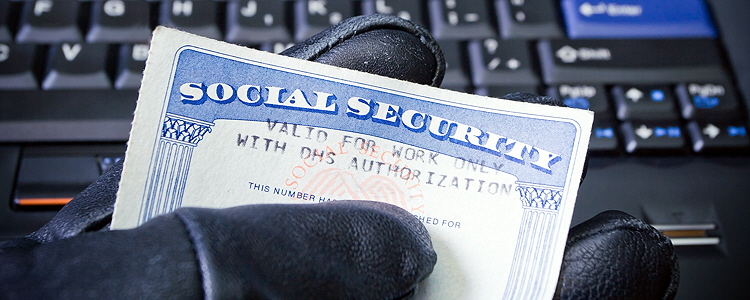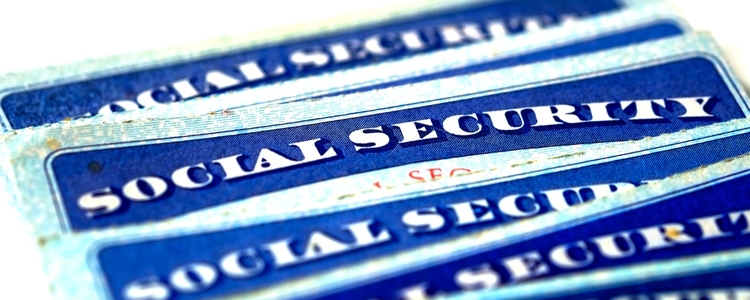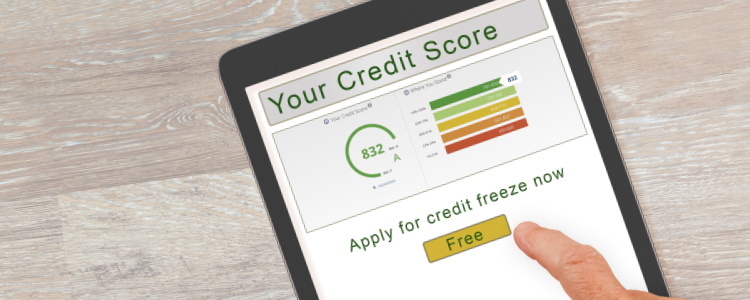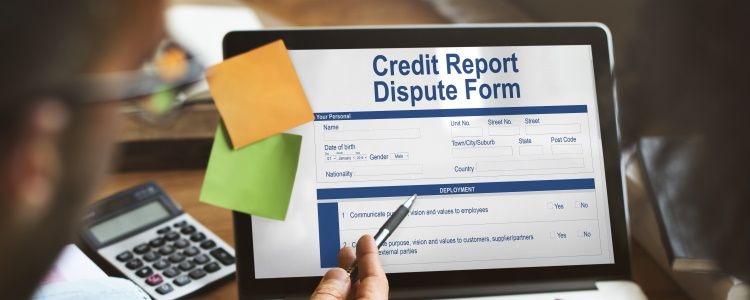Different Types of Identity Theft
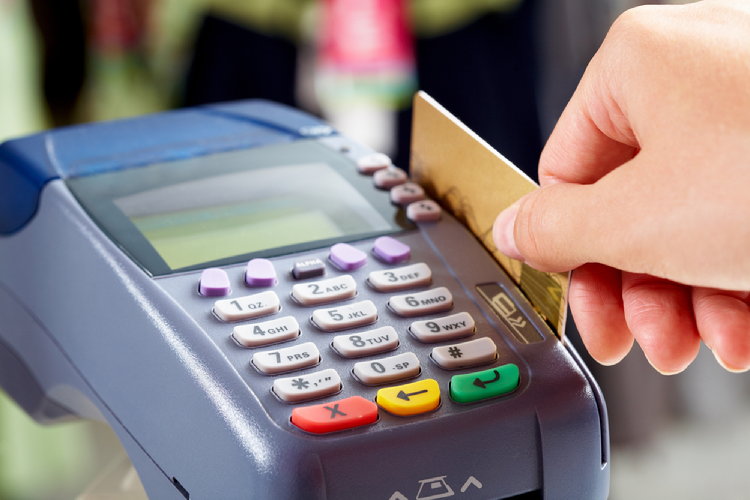
Most people are aware of the fact that identity thieves can open credit cards in their name and that their bank accounts can be hacked. However, there are other ways that criminals can get and use stolen information.
- Credit Card and Bank Account Fraud: It has become all too common for lawbreakers to lift data from others in order to gain access to credit cards and bank accounts. They may even open a new credit card in someone's name. This info can either be physically stolen or obtained through online hacking. Sometimes, individuals are targeted, but sophisticated hackers can also hit entire retail chains.
- Child Identity Theft: Young minors are easy targets for ID thieves because their credit reports are seldom checked. So, if a criminal is able to obtain a child's social security number (SSN), they can commit fraud that may not be detected for years.
- Tax ID Theft: Many SSN pirates use these stolen numbers to file false tax returns with the IRS. They will then collect the fraudulent refunds via check or direct deposit.
- Medical ID Theft: This crime involves someone taking another person's medical information and using it illegally. Types of data stolen may include Medicare info or health insurance member numbers. The thief will then use the information to either get medical services or to have services billed to the victim.
Unfortunately, these are just a few of the ways in which identity theft can happen. The average consumer has to be very careful about protecting their personal information, especially when they're online. Luckily, there are simple measures that anyone can take help ensure their safety.
How To Prevent Identity Theft?
It seems that identity thieves are always evolving and learning new and more advanced ways to steal information. However, there are measures that every consumer can take to protect their personal data.
- Subscribe to an ID theft monitoring service. There are plenty of companies out there that offer this kind of service. So make sure that you're getting a decent rate and working with a reputable provider.
- Use online passwords that are difficult to guess. Ideally, you should be using random combinations of letters, numbers, and symbols. Names of pets and children, birthdates, and your favorite sports teams can easily be found on social media.
- Protect your SSN. Never carry your Social Security card in your purse or wallet. And only give your number out when absolutely necessary. While your social security number is needed for tax and credit check purposes by employers and businesses, if you are asked to furnish it for any other reason, ask why and how it will be used, how they will protect your information, and what will happen if you don't give it to them. For example, if an unsolicited offer requires your SSN, don't fill it out.
- Check your child's credit reports. Even if you expect to see nothing there, it's safer to be sure. Besides, even children are entitled to receive free copies of their reports every 12 months. So visit AnnualCreditReport.com to verify that your child's credit future is secure. You should also be checking your own credit reports.
- Guard your purse or wallet. First, you should only be carrying a small amount of personal info at any given time. Next, your purse or wallet should remain in your sight and closed when it is not in use.
- Be careful with your trash and mail. Shred any credit-related documents, including offers of credit from credit card companies. Deposit mail containing sensitive information directly in collection boxes or at the post office. When going on vacation, have the post office hold your mail.
- Keep all your personal information in a safe place. In addition, ask those businesses that have access to your information how it will be handled, and stored and the methods of disposal once it's no longer needed.
Use caution when shopping online. Making an online purchase always requires a little bit of a gamble. However, you can decrease the risk involved by only using sites that are known to be safe and secure.
Even cautious consumers can become victims of ID theft. So there is no such thing as being too careful when it comes to protecting your personal data.
How to Recover from Identity Theft?
When you discover that someone has committed fraudulent activity with your personal information, you have to immediately control the damage. At Auto Credit Express, we have helped hundreds of thousands get affordable auto financing, and we want to help you in any way we can. In order to do that, we wanted to provide you with some tips from the Federal Trade Commission on how to recover.
First, place an initial fraud alert with any of the major credit bureaus. You only need to contact one of the three credit reporting agencies to do this, and they will have to notify the other two. What this will do is make it more difficult for anyone who isn't you to open accounts in your name; before any account credit limits are approved, they will contact you directly to verify whether it was you who opened the account. This alert will remain on your report for 90 days and can be renewed at that time. There is no charge for this service.
Make sure that the agencies have the proper contact information for you so they can easily reach you, and be sure to verify that they will tell the other two agencies.
- Get Your Credit Reports. After you set up the fraud alert, you can get a free credit report from each of the three reporting agencies. When you order the reports, ask them to only print the last four digits of your social security number on them for added security. Analyze the reports for any unauthorized activity/accounts. Once you know or if you already know which accounts have been affected by this, establish contact with their fraud departments and be sure to follow up with them in writing through certified mail with a return receipt.
- After reviewing your report(s), make note of any account or transaction you don't recognize. It will be helpful to know as many details as possible before filing a report with the FTC and the police.
- Make an Official Report. After you have taken the first two steps, you want to build an Identity Theft Report. This report states what happened and will enable you to properly deal with the companies and collection agencies that were involved with the accounts that were opened by the thief. This report allows you to get fraudulent information removed, stop collections on accounts opened with falsified information, aand acquire information on the accounts in question.The report you submit to the FTC is called an Identity Theft Affidavit. Make a copy of this document for your records, as you will need it when you file the police report. Once you have the police report, that and the affidavit will be your Identity Theft Report. This report will also help you place freezes on your accounts as well as help you set up an Extended Fraud Alert, further impeding the identity thieves.
- Contact the Federal Trade Commission (FTC). You will need to formally report the theft of your identity by either completing the FTC's online complaint form or calling them at 1-877-438-4338. Make sure that you print and keep the Identity Theft Affidavit that the FTC will provide for you. You will need this when you file a report with your local police department.
- Go to the closest police office to file a report. Bring with you the aforementioned Identity Theft Affidavit, a government-issued ID with a photo, proof of your address (such as a utility bill), and any proof that you have that your identity was stolen. Make sure that you ask for a copy of the police report because you will need it for the remaining steps of your recovery plan.
- Call all relevant companies. These include stores where purchases were made in your name without your consent or knowledge, credit providers, and your bank. Ask for a freeze to be placed on any account that was affected by the identity breach, and change the logins, passwords, and PINS for all of your accounts.
After this, you should have all of the tools you need to dispute transactions that were not made by you. Contact the creditors in question and have them remove the incorrect information from your accounts.
Repairing the Damage to Your Credit
Finally, you will need to undo anything that was illegally done with your identity. While you may be stuck with some damage to your financial standing, you can minimize the harm by doing the following:
- Close any accounts that you didn't authorize.
- Petition to have bogus charges removed from your legitimate accounts.
- Request that corrections be made to your credit report.
- Consider signing up for a credit monitoring or identity theft protection service with a reputable and trustworthy company.
Whatever route you decide to take, you will want to take some kind of measure to protect your credit from fraud threat so that you don't have to go through all of this again.
The Bottom Line
When it comes to your personal information, you can never be too safe. Be cautious about sharing your information. Many businesses may only need your SSN for general record keeping – not a good idea. Verify the legitimacy of an organization before you share any information with them. We may specialize in bad credit auto loans, but we don't want the bad guys to get it, too. Your credit is hard enough to reestablish without some hacker grabbing it to further ruin your FICO score.
At Auto Credit Express, we want your information sent securely. So feel free to visit our site to see the steps that we have taken to make every part of your buying experience safe and secure. Remember, here at Auto Credit Express, we want you securely “on the road” to better credit.
If your credit has been damaged as a result of ID theft or for any other reason, car loan approval is still possible. And if you need to finance a new or used vehicle, we're here to help. Even if your credit is bad, we can match you with a local dealership that can work with tough credit situations.
